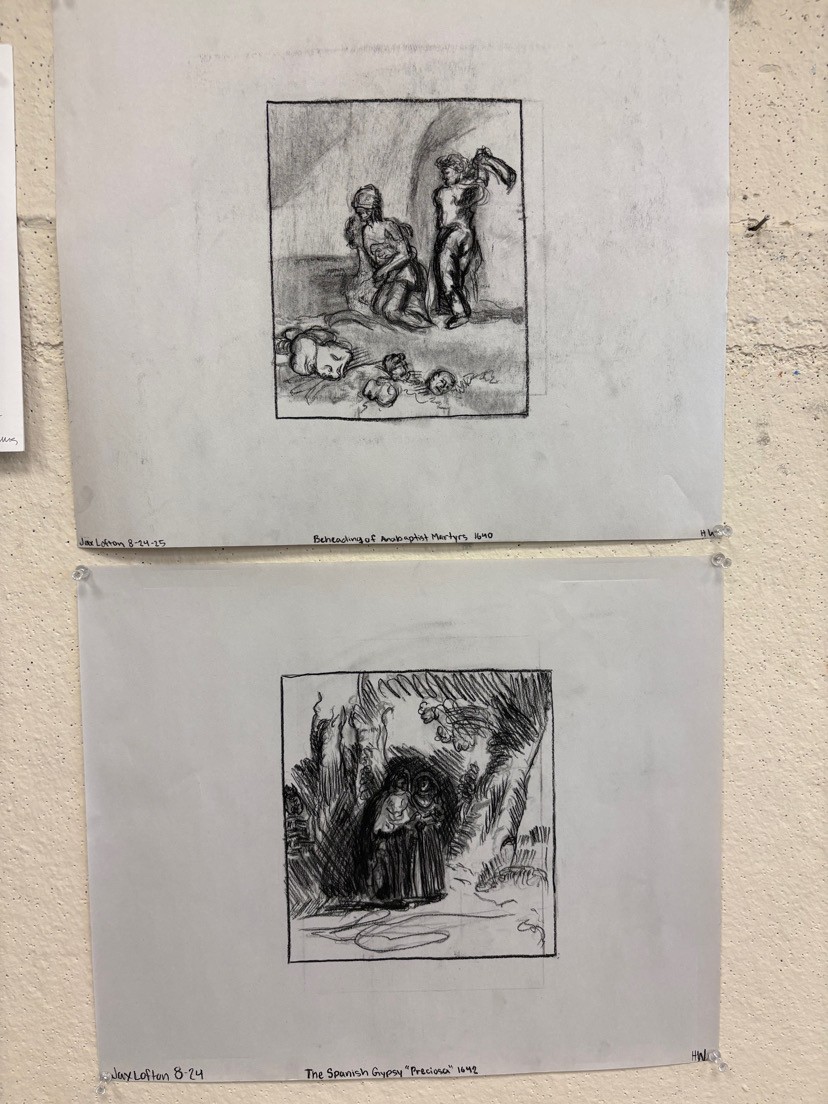Associate professor Max Grivno pulls a black and white composition notebook from his bag – the contents of which are several months’ worth of research in neatly compiled notes and handwriting – as he expounds on the peculiarity of Sylvester Magee, allegedly the oldest man in history.
Magee claimed to be a 130-year-old American slave. A.P. Andrews, a retired insurance agent and amateur historian, brought Magee’s story to national attention in the 1960s through interviews and the collection of documentation of Magee’s claim.
“The question of who he was is one that has fascinated people for a long time,” Grivno said. “It’s a story of a man who claimed to be 130 years old, a man who claimed to the last slave [and] a man who claimed to be the last surviving veteran of the civil war. At first brush, the claim seems almost impossible to believe. There’s only been one documented case of a person getting anywhere near that [age]. That was a woman in France who may have been in her late 120s.”
Grivno transcribed these notes from a collection of handwritten letters, two reel-tapes that have been digitally reformatted, news clippings, articles and documents – some of which were frail, yellowed, damaged or illegible. The material, collected by Andrews, resides in the McCain Library. The library received the collection from retired University of Southern Mississippi history professor William Scarborough.
“I was a member of the Jackson Civil War Round Table along with A.P. Andrews,” Scarborough said. “Andrews was the one who gathered this material together. He passed away, and we had a ceremony, and Andrew’s wife Zetna formally presented the materials to me in hopes that I would write a book about Sylvester Magee. [The collection] stayed in my office for 30 years or so, and when I retired in 2011, I gave the materials to the McCain Library.”
Scarborough said he did not have time to write about Magee due to teaching, researching and his doubts about Magee’s claim.
“I doubt that he was that old,” Scarborough said. “I doubt that he was a part of the civil war. Andrews thought he was the genuine article. He ignored the evidence that was contrary to his point of view or he twisted it to his own ends.”
Grivno has meticulously poured over this collection, visited county courthouses to obtain documents that pertained to Magee or his name’s likeness and collected any shred of evidence that would illuminate Magee’s true age.
“The evidence that we have about Sylvester Magee is very thin on the ground,” Grivno said. “There’s not much that we know, and it’s often contradictory. I was at the Forrest County courthouse earlier this week, and one of the items mentioned in the early press coverages of Sylvester Magee was that he was married in 1949, at which point he would have been 107 [or] 108. It doesn’t seem that anyone in the 1960s checked his marriage license.”
Grivno pointed to his computer screen showing Magee’s 1949 marriage license application, which cited Magee’s age as 60 years old.
“Here again is where it gets complicated,” Grivno said. “In the 1940 census, there is a fellow named Sylvest Magee – who is probably the same person – who’s living in Lamar County, Miss. claiming that he is 97 and born about 1843 in North Carolina. This is consistent with the details that Magee told one of the interviewers in the 1960s. The problem is that’s also the same fellow that gets married in 1949 and claims to be 60. There’s a real lack of consistency about his age. I haven’t been able to track him consistently over the years in the historical records.”
Mississippi did not begin issuing birth certificates until 1912, so Grivno cannot track Magee with that documentation. Grivno discovered WWI draft cards of three African-American men from Lamar county who registered for the draft in 1917. Two of the men were in their 20s, and one was in his 40s. However, this would show that Magee’s age during the 1960s would be around 80 or 90 years old. A.P. Andrews’ interference with Magee in the 1960s complicates matters further.
“Andrews was an rabid segregationist,” Grivno said. “He did everything he could to resist the Civil Rights movement. He used southern history and Confederate heritage to block the freedom struggle in the 1960s. He’s an unlikely fellow to bring this story forward. It wasn’t just the story of Magee, it’s the story of his relationship with this historian. It’s an interesting kind of dynamic.”
Grivno said he believes Andrews’ motives were complex and that Andrews believed Magee about his age. Andrews saw his research as an opportunity to establish himself as a historian.
“In some ways, I think people like Andrews were trying to show that they weren’t racist or that they believed the races should be separate, but it didn’t mean that they saw themselves as hateful people,” Grivno said. “Andrews gets to these points in his interviews. He asks Magee if he would rather be alive in the 1850s or the 1960s. He’s shocked when Magee says he’d rather be alive in the 1960s. It’s almost like he wants Magee to validate white supremacy.”
Grivno said when Andrews asked Magee about integration, Magee said, “Mixing is not right – it ain’t right. White folks has always been ahead all the time. Mixing up, there’d be a war here. You all would kill all of us. You all ain’t gonna stand for it.”
“Magee never says that whites are superior but resistance to segregation will result in a lot of violence,” Grivno said. “Regardless of however old he is, if he’s 130 or just 60, he would have grown up in the worst years of post-slavery race relations. He would have seen or heard of black men being lynched for any number of reasons. He would have known that any challenge to the racial order would be met with overwhelming violence.”
Many cases such as Magee’s showed that the media used former African- American slaves in post-slavery times as props. Several times, the articles would not go into details about the individuals’ lives or personal matters but would juxtapose them next to new technology as a means to show how far America had come in post- slavery race relations, according to Grivno.
In one National Enquirer article clipping at McCain Library, Magee poses with a telephone pressed against his aged face and white beard.
Grivno showed a collection of laminated articles similar to that of Magee’s. The articles featured former African-American slaves’ faces printed in black ink and lined with old age. The case of Magee follows closely to those printed in these articles. There was never a mention of the life he lived in abject poverty.
As a social historian, Grivno’s work revolves around finding information on those like Magee, where little documentation exists. The entirety of the man and mystery of Magee resides in a small gray box in McCain Library.
The cumulation of Magee’s case will result in a presentation of Grivno’s findings at 6 p.m on Oct. 4 in the Cook Library Art Gallery.

























